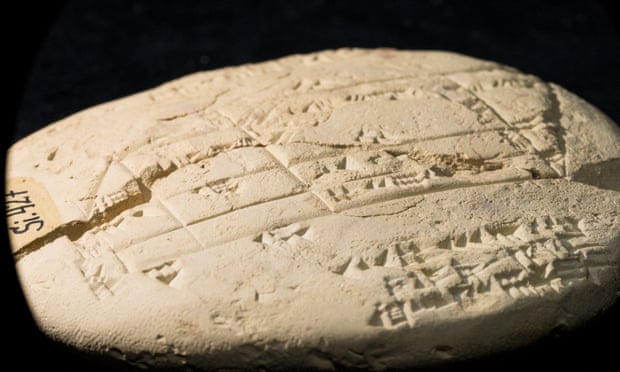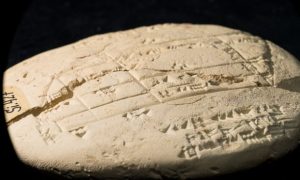The Guardian reported on a mathematician determining that Babylonians had discovered applied geometry by 1,700 BCE. The article begins:
“An Australian mathematician has discovered what may be the oldest known example of applied geometry, on a 3,700-year-old Babylonian clay tablet.
“Known as Si.427, the tablet bears a field plan measuring the boundaries of some land.
“The tablet dates from the Old Babylonian period between 1900 and 1600 BCE and was discovered in the late 19th century in what is now Iraq. It had been housed in the Istanbul Archaeological Museum before Dr Daniel Mansfield from the University of New South Wales tracked it down.
“Mansfield and Norman Wildberger, an associate professor at UNSW, had previously identified another Babylonian tablet as containing the world’s oldest and most accurate trigonometric table. At the time, they speculated the tablet was likely to have had some practical use, possibly in surveying or construction.”
Read the entire article:



“Applied geometry” in this case doesn’t mean the math field, it means applied, as in used for construction, and literal geometry, geo-measuring. If you can tell from context that this tablet was written by a Babylonian, that tells you the Babylonian civilization at this time possessed this knowledge. Many other Near Eastern civilizations were at some point in history important centers of mathematics, like Egypt or Greece.